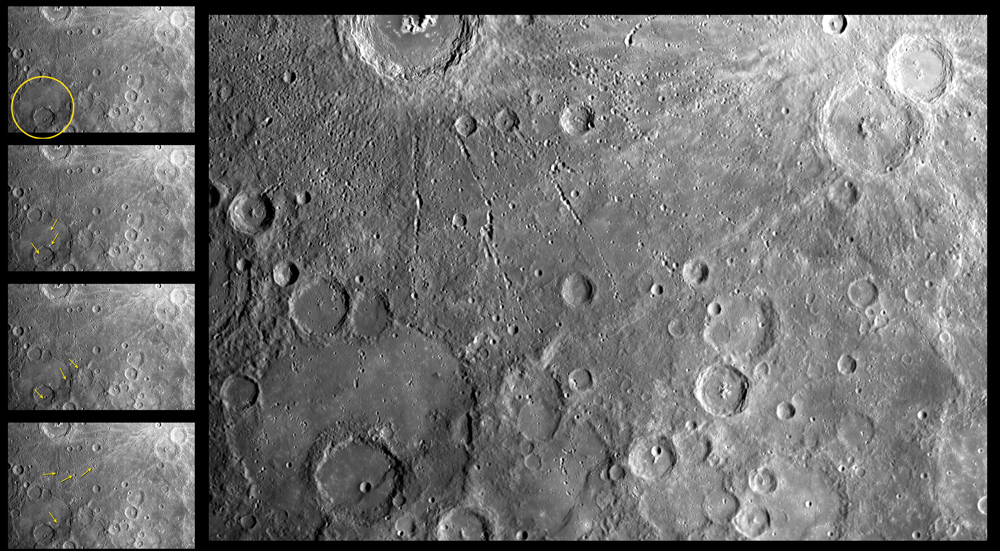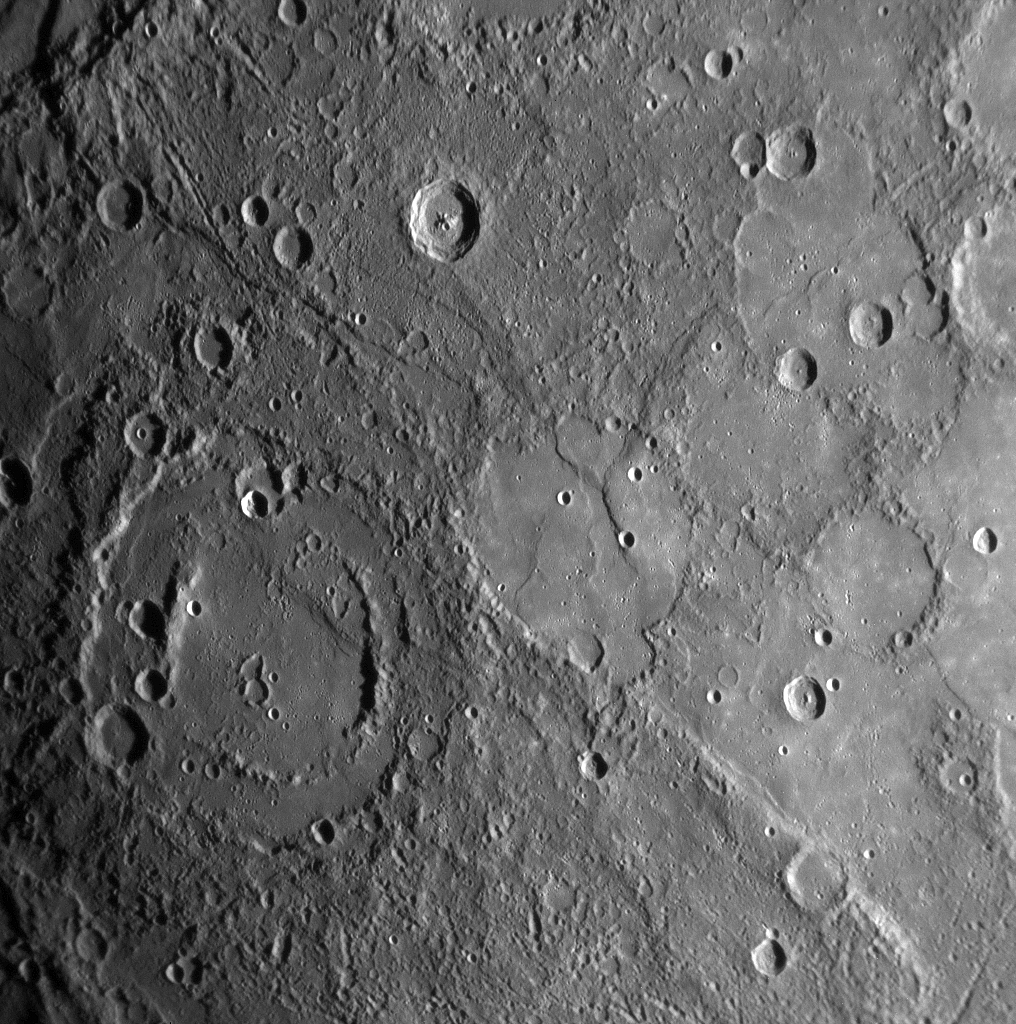The Most Enduring Mysteries of Mercury
Secrets of Mercury
The closest planet to our sun, and the smallest in the solar system, is also one of the least understood. Compared to more glamorous planets like Mars, Jupiter and Saturn, Mercury has received much less attention from scientific study missions. But NASA's Messenger probe is set to reveal the secrets behind the odd planet. The probe has flown by Mercury three times and will enter orbit around the planet in March — the first spacecraft ever to do so.
Here's a look at some of Mercury's most enduring mysteries. In the words of Messenger science team member Robert Strom, "The best is yet to come. What you're seeing here is just the tip of the iceberg."
Dense Metal Core
Mercury is so dense, scientists believe its heavy iron core accounts for two-thirds of the planet's mass, more than twice the ratio of core to mass for Earth, Venus or Mars. Scientists aren't sure what caused this incredibly high density, but suggest it might have started off with more mass that got scraped off by collisions. Researchers hope MESSENGER's geology measurements can shed light on how the planet formed, and how it got to be so dense.
Why Does It Have an Atmosphere?
Mercury is so small, scientists long assumed it had no atmosphere. But Mariner 10 surprised experts by revealing a tenuous net of gas around the planet. Mercury's thin atmosphere constantly escapes the weak gravity of the planet, but somehow, hydrogen and helium are constantly replenished. Scientists suspect the solar wind draws the gases back to the planet, and hope MESSENGER measurements can provide further insight.
Mercury's Tails
Scientists don't know exactly what creates and shapes the bright tails of particles that stream off the planet's surface. They believe some mechanism of interaction between the solar wind and Mercury's magnetosphere is responsible. Messenger took sensitive measurements of the light emission from the tails of sodium and hydrogen to learn more about them. This image shows the strength of the hydrogen tail flowing out behind Mercury.
Mercury's Violent History
The pock-marked surface of Mercury is highly reminiscent of the moon. The planet has been continually bombarded by space rocks that leave their mark with craters.
But there are important differences between Mercury's craters and the moon's. For one thing, some craters on Mercury seem to be shallower than similar-sized craters on the moon, although the scientists must investigate further Messenger data to see if this trend holds across the planet.
This image shows the littered surface of Mercury, where some craters are secondary, formed when material displaced in one impact lands nearby and forms another crater.
What Lies on the Hidden Side?
The last time humans sent a probe to Mercury, more than three decades ago, we were able to see less than half of the planet. Messenger has already revealed another 30 percent of Mercury that the 1975 Mariner 10 mission didn't cover. By combining images taken in different color filters, Messenger created this image of the hidden side of Mercury. Scientists can study the subtle color differences to detect changes in the surface material.
Did Mercury Have Volcanoes?
Plains on the surface seem to have been formed when volcanic lava spilled over the rough surface and dried smooth. Many craters appear to be filled with this material. These are strong clues that Mercury once had volcanic activity, although scientists don't see this going on now. In the lower right corner of this picture is a crater within a crater, filled in with smooth plains material that scientists think might be volcanic in origin.
Breaking space news, the latest updates on rocket launches, skywatching events and more!
Mercury's Magnetosphere
Earth has one, and so does Mercury, inexplicably. Researchers don't know why this small, slowly spinning planet has a magnetic field around it, but measurements taken when Messenger flew through Mercury's magnetosphere have shed new light on the conundrum. The data shows that Mercury's magnetic field has two poles, like Earth's, and hosts significant densities of charged particle plasma pulled off the sun.
Does Ice Hide on the Planet's Surface?
A spectrometer on Messenger has taken measurements of the light bouncing off Mercury's surface in different colors to help scientists understand what the soil is made of, and whether ice can exist on the closest planet to the sun. The red and blue lines represent two different points on the planet's surface, and their divergence reveals that different minerals are present in each bit of land.
Is Mercury Shrinking?
Scientists suspect the core of the planet is slowly cooling and becoming smaller, causing the whole globe to shrink. Many long and high cliffs on Mercury appear to be signs that the surface is crumbling as the planet buckles beneath it. The right side of this image shows one such cliff running vertically for more than a hundred miles.
The 'Spider'
This baffling structure on Mercury's surface, an impact crater surrounded by radiating cracks in the ground, is unlike anything seen elsewhere in the solar system. Scientists are at a loss to explain what caused the troughs to form, but suspect that underground volcanism might be involved. They aren't sure of the relationship of the central crater to the more than 50 grooves, and say it's even possible that the cracks occurred first, and a meteoroid just happened to land in the center.

Clara Moskowitz is a science and space writer who joined the Space.com team in 2008 and served as Assistant Managing Editor from 2011 to 2013. Clara has a bachelor's degree in astronomy and physics from Wesleyan University, and a graduate certificate in science writing from the University of California, Santa Cruz. She covers everything from astronomy to human spaceflight and once aced a NASTAR suborbital spaceflight training program for space missions. Clara is currently Associate Editor of Scientific American. To see her latest project is, follow Clara on Twitter.











